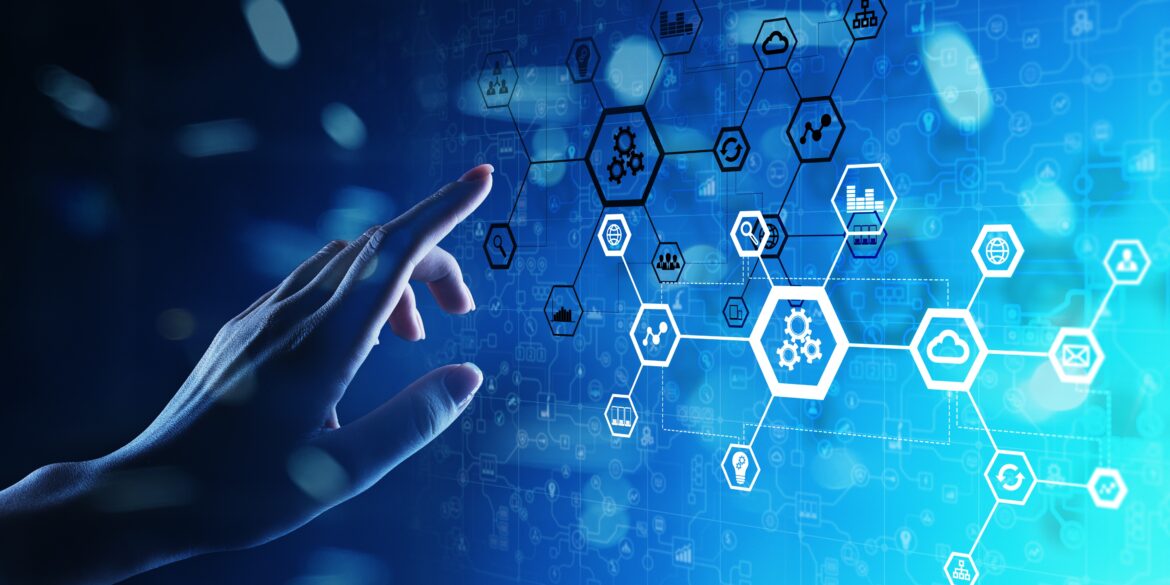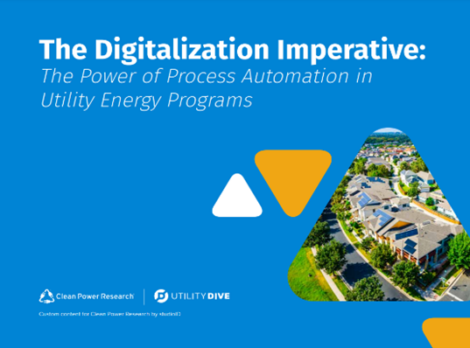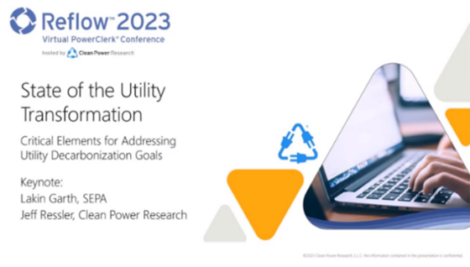Digitization vs. digitalization
Digitalization is more than a trending buzzword. It’s the next crucial step following “digitization” that utilities are taking to tackle real-world challenges. In fact, the Smart Electric Power Alliance (SEPA) recently identified digitalization as a vital industry need based on an extensive utility survey.
When you think about digitizing or digitization, it might involve scanning a physical document such as a PDF application into a computer. However, this simply changes the way existing information is stored and accessed without adding further value to the data or the business process that was digitized.
Here’s where digitalization sets itself apart. By leveraging digital technologies and digitalized data, digitalization makes information more accessible and valuable. Digitalization transforms manual business processes by maximizing the use of digital technologies, dramatically reducing the need for human intervention and making digitalized data easily available for other business processes.
SEPA emphasizes the need for utilities to increase their data visibility, efficiency and capabilities through digitalization. This can translate to automating customer DER education, streamlining program processes and automating DER integrations to gain better insight into customer actions that impact the grid.
As shown in the table below, “digitization” provides limited benefits to utility teams, while “digitalization” provides tangible benefits in the context of efficiently and effectively running DER-focused energy programs at scale.
Progressing a Utility Energy Program from Manual to Digitized to Digitalized:
Digitalization helps utilities achieve energy program goals
Through digitalization, utilities are accelerating a wide range of goals as their energy programs scale. Some of these goals include reducing project completion time, eliminating project backlogs, improving customer satisfaction and gaining the ability to look into the future with grid resiliency in mind. Here are a few ways digitalization helps utilities meet these important goals:
- Increasing customer satisfaction by empowering customers with a self-service DER education tool
- Automating processes for customers to access utility services and programs
- Minimizing human error (made by customers, trade allies and utility team) in processing customer applications
- Reducing status inquiries from customers and trade allies by extending digital access to projects
- Meeting regulatory reporting deadlines by automatically running recurring reports
- Running future DER adoption scenarios by enabling data analysis
Unlocking benefits through digitalization
Digitalization holds the potential to deliver substantial advantages to utilities and stakeholders. To illustrate this, let’s use the example of an EV make-ready energy program to highlight some of the benefits for utilities and stakeholders:
Benefits for the utility
The digital transformation helps utilities scale and streamline energy programs and unlock data for better grid planning. For example, through digitalization, the utility provides an online application system that validates key fields and project eligibility and alerts the utility team to review the submitted application.
Utilities receive eligible and accurate application submissions, reducing the need for back-and-forth exchanges with applicants. This in turn accelerates the approval process, helping the team to reduce project backlogs, scale their programs and obtain goals sooner.
The EV team is better equipped to meet ongoing regulatory reporting deadlines by automating reporting. Utilities can also use their digitalized data to analyze future DER adoption scenarios for grid planning and stability.
Benefits for trade allies (installers), customers and regulators
The trade allies involved in make-ready projects benefit from an improved, user-friendly online application process that outlines qualifications and available rebates upfront. Additionally, approval times are faster, and allies have 24/7 access to project status. These improvements foster better relationships between utilities and trade allies.
On the customer front, satisfaction levels are heightened by faster approval and project completion times, and a smoother project process with their installer. Meanwhile, regulators receive timely digital reports and seamless access to essential information, fostering a good relationship with the utility.
In essence, digitalization benefits utilities, customers and trade allies by saving administrative time, providing customer education, automating tasks, speeding up project lifecycles, automating reporting and making it possible to analyze how future technology adoption may affect grid reliability.
Digitalization resources for utilities
Below you’ll find two new resources to help you dive deeper into digitalization and learn how digitalization is helping utilities scale energy programs, tame backlogs, educate customers, meet reporting requirements and more.
Utility Dive Playbook
The Digitalization Imperative: The Power of Process Automation in Utility Energy Programs
Keynote Session – Reflow 2023
Features SEPA’s Emerging Technology Director, Lakin Garth, and Clean Power Research CEO, Jeff Ressler
To learn more about Clean Power Research utility focused products and solutions, contact us.


